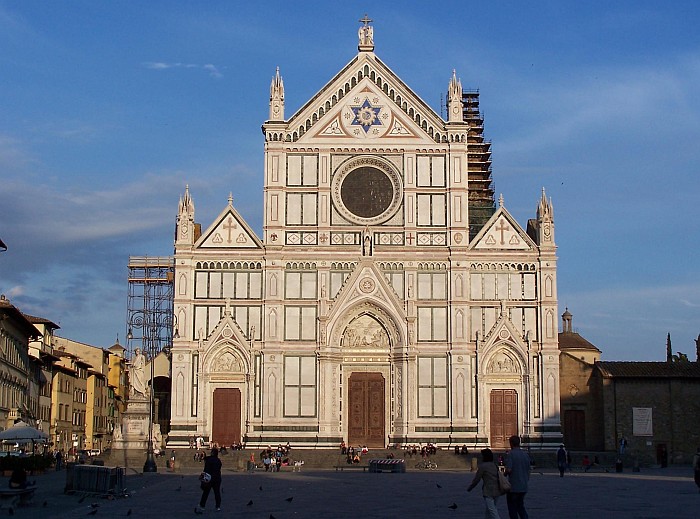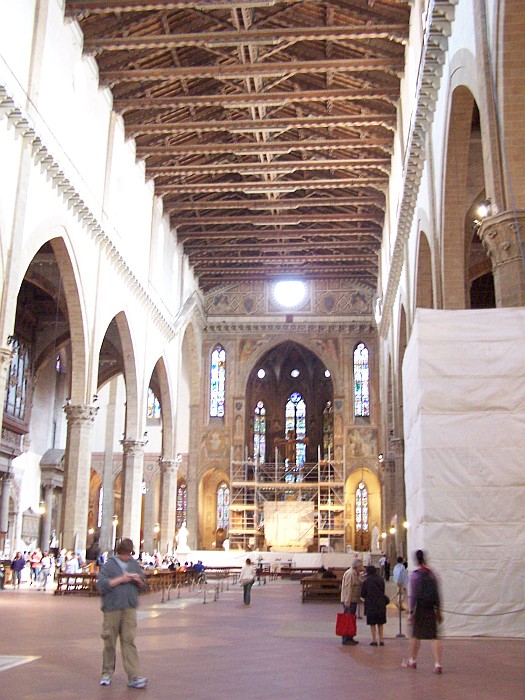(Italian pronunciation: bah-zee-lee-kah sahn-tah crow-chay)

The magnificent Gothic Church of Santa Croce (1294)
contains the tombs of many famous Florentines, including Michelangelo
and Galileo.

The magnificent Gothic Church of Santa Croce (1294)
contains the tombs of many famous Florentines, including Michelangelo
and Galileo.
The Basilica of Santa Croce in Florence, which they began to build in 1294 according to the plans of Arnolfo di Cambio, is the largest Fransican church in the world. It was constructed with funding from the population and the Florentine Republic and built above the foundations of a small church which some monks had erected outside the walls of the city in 1252, just a few years after the death of Saint Francis. The remains of the original building were not identified until 1966, when in the aftermath of the great flood that submerged the city, part of the paving belonging to the present Basilica gave way. From its beginnings, the history of Santa Croce has been closely linked to the history of Florence itself. Since its foundation, it has been continually re-planned and re-designed throughout the course of those seven centuries without suffering significant interruptions, and therefore acquiring new symbolic connotations each time. From the original Franciscan church it evolved to become a religious town hall for the important families and corporations when Florence was ruled by the Medici family. From being a craftsmen's laboratory and workshop - first Humanist and then Renaissance - it became a theological center; and in the 19th Century, it saw a change from being a pantheon of the nation's glories to a place of reference for the political history of Italy before and after its unification.

The spacious airy interior is enhanced by the radiant frescoes of
Giotto
and his gifted pupil, Taddeo Gaddi, painted early in the 14th century.
In Florence, Santa Croce has always been a prestigious symbol and a gathering place for some of the greatest artists, theologians, religious figures, writers, humanists and politicians. It has similarly served the powerful families that throughout the centuries have determined, both for good and bad, the identify of Florence during the Late Medieval and Renaissance periods. Within its walls, it has hosted many famous people in the history of the church, such as Saint Bonaventure, Saint Anthony of Padua, Saint Bernadino of Siena, Saint Ludovico d'Angio and the bishop of Tolosa. It was also a resting and reception place for Pontiffs such as Sixtus IV, Eugene IV, Leo X and Clement XIV.